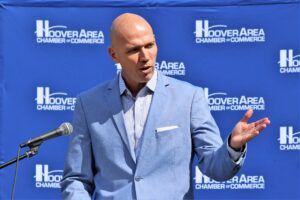Southern Research secures $20 million for clinical trial initiative, hires Khalilah Brown as new medical director

Southern Research is using $20 million in state ARPA funds to expand Alabamians’ access to clinical research trials and promote the growth of the state’s biomedical industry. The Birmingham-based company, founded in 1941, is a non-profit scientific research organization that employs 250 scientists and professional staff. The new initiative at Southern Research was included among $1 billion in American Rescue Plan Act spending supported by Alabama Gov. Kay Ivey and approved during a special session of the Alabama Legislature. “We are using these funds to create an innovative software platform that will make it easier for patients and their doctors to locate and plug into cutting-edge clinical trials,” said Josh Carpenter, Ph.D., the President and CEO at Southern Research. “Our goal is to make sure Alabamians have access to the very best options for their care.” Southern Research also hired its first-ever Vice President of Medical Affairs and Patient Advocacy. Dr. Khalilah Brown, a pediatrician who most recently served as the child health medical director and laboratory director at the Jefferson County Department of Health, joined Southern Research in March. “I’m thrilled at the chance to be a bridge between the great work that is happening at Southern Research and the patients who ultimately benefit from it,” Dr. Brown said. “At the end of the day, patients motivate our work, and it is a great benefit on all sides when we can build stronger connections between researchers, patients, and healthcare providers.” By creating new infrastructure to support access to clinical trials, Southern Research hopes to attract more of those trials to Alabama, which would have a significant economic impact and health benefits for the state. “The new project at Southern Research has the potential to be a particular benefit for healthcare in rural communities,” Gov. Ivey stated. “It will boost residents’ access to the latest clinical trial research and offer new revenue opportunities for rural healthcare providers. For the state overall, it will help us grow an industry that can have a tremendous economic impact.” Nationally, clinical trials were a $50 billion industry in 2022, and that number is expected to grow to $80 billion by 2030, Carpenter said. “This is an opportunity to support hospitals and communities that don’t usually have access to the latest in healthcare technology,” Carpenter said. “We see this as a way to improve healthcare equity and healthcare outcomes for Alabamians.” “For the first time in its recorded history, Alabama had more deaths than births in 2020,” Carpenter said. “In large measure, this was due to COVID-19 and the underlying health conditions that made the virus so deadly for Alabamians. By making cutting-edge research more broadly available, we have the opportunity to improve our community’s health and our resilience to infections like COVID-19.” Southern Research has conducted more than $30 million in coronavirus research since 2020, including collaborations on a COVID-19 vaccine currently in clinical trials, conducting thousands of PCR tests, and refining the underlying chemistry of critical treatments.
Rep. Terri Sewell says Supreme Court ruling striking down affirmative action “ignores our history”
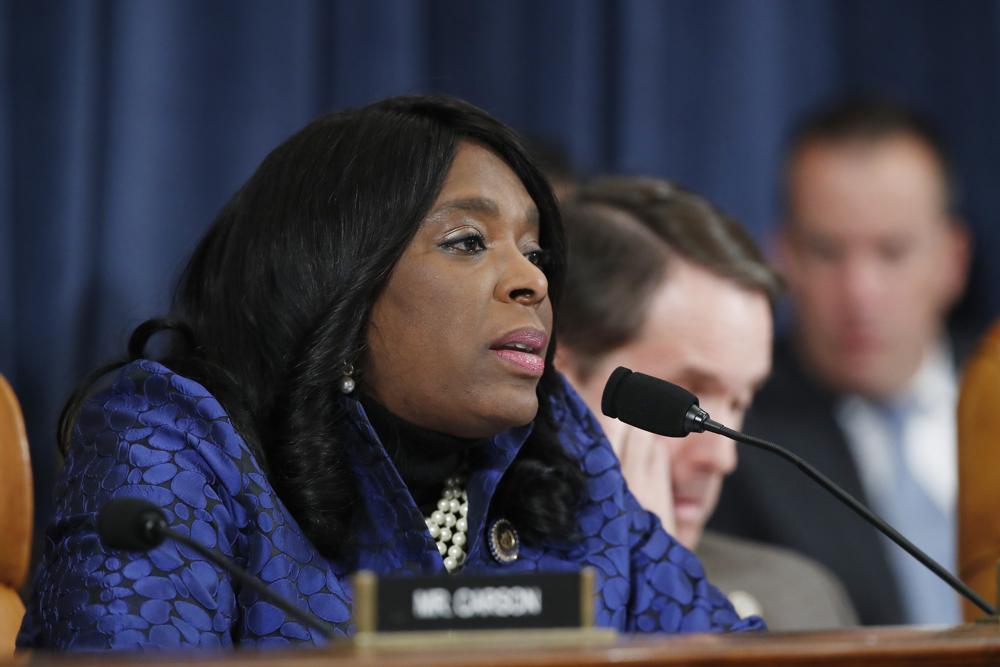
The U.S. Supreme Court released a pair of decisions on Thursday severely limiting the use of race as a factor in college admissions. This decision effectively ends those affirmative action programs that many colleges have used for years. The Court’s six conservative justices invalidated both Harvard’s and the University of North Carolina at Chapel Hill’s (UNC) admissions schemes by ruling they did not comply with the 14th Amendment’s guarantee of equal protection. “Both programs lack sufficiently focused and measurable objectives warranting the use of race, unavoidably employ race in a negative manner, involve racial stereotyping, and lack meaningful end points,” Chief Justice John Roberts wrote for the majority. “We have never permitted admissions programs to work in that way, and we will not do so today,” Roberts continued. “At the same time, as all parties agree, nothing in this opinion should be construed as prohibiting universities from considering an applicant’s discussion of how race affected his or her life, be it through discrimination, inspiration, or otherwise.” “The Court today makes clear that, in the future, universities wishing to discriminate based on race in admissions must articulate and justify a compelling and measurable state interest based on concrete evidence,” stated Justice Clarence Thomas. “Given the strictures set out by the Court, I highly doubt any will be able to do so.” Congresswoman Terri Sewell released a statement stating her opposition to Thursday’s ruling. “For centuries, African Americans were systematically denied the opportunity to pursue a higher education and gain financial independence, leaving a painful legacy of discrimination that persists to this day,” Rep. Sewell said. “It was during my parents’ lifetime that institutions like the University of Alabama finally allowed Black students to enroll alongside their peers. For the past four decades, the Supreme Court has recognized the important role of affirmative action in breaking down educational barriers for Black students. After all, our entire nation benefits when talented students of diverse backgrounds get a fair shot at success. But with today’s extreme reversal, the Court has chosen to ignore our history and roll back our hard-fought progress. “This is another solemn reminder that progress is elusive, and every generation must fight to preserve the progress of the past and advance it,” said Sewell. The Biden administration had backed the two schools before the Court. The biggest beneficiary of this will be Asian Americans. Asians as a group have a disproportionately high percentage of high performers on standards such as grade point average, ACT scores, GRE scores, etc., so they may face discrimination in the number allowed into colleges and universities. To connect with the author of this story or to comment, email brandonmreporter@gmail.com.
Supreme Court strikes down affirmative action in college admissions and says race cannot be a factor
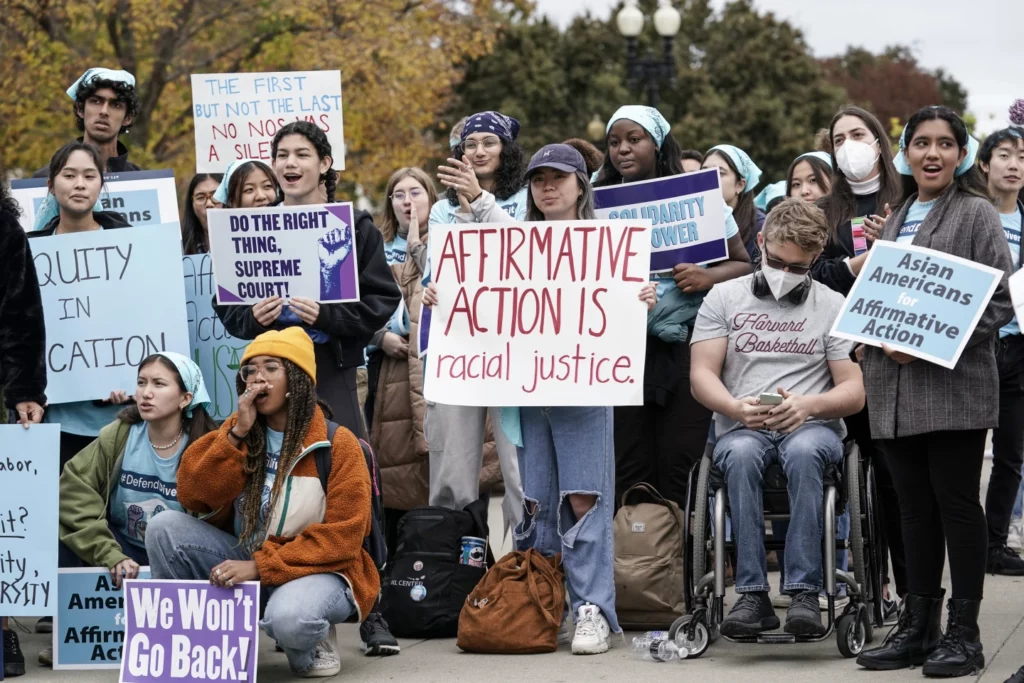
The Supreme Court on Thursday struck down affirmative action in college admissions, forcing institutions of higher education to look for new ways to achieve diverse student bodies. The court’s conservative majority overturned admissions plans at Harvard and the University of North Carolina, the nation’s oldest private and public colleges, respectively. Chief Justice John Roberts said that for too long, universities have “concluded, wrongly, that the touchstone of an individual’s identity is not challenges bested, skills built, or lessons learned but the color of their skin. Our constitutional history does not tolerate that choice.” Justice Clarence Thomas, the nation’s second Black justice who had long called for an end to affirmative action, wrote separately that the decision “sees the universities’ admissions policies for what they are: rudderless, race-based preferences designed to ensure a particular racial mix in their entering classes.” Justice Sonia Sotomayor wrote in dissent that the decision “rolls back decades of precedent and momentous progress.” Both Thomas and Sotomayor took the unusual step of reading a summary of their opinions aloud in the courtroom. In a separate dissent, Justice Ketanji Brown Jackson — the court’s first Black female justice — called the decision “truly a tragedy for us all.” The vote was 6-3 in the North Carolina case and 6-2 in the Harvard case. Jackson sat out the Harvard case because she had been a member of an advisory governing board there. The Supreme Court had twice upheld race-conscious college admissions programs in the past 20 years, including as recently as 2016. But that was before the three appointees of former President Donald Trump joined the court. At arguments in late October, all six conservative justices expressed doubts about the practice, which had been upheld under Supreme Court decisions reaching back to 1978. Lower courts also had upheld the programs at both UNC and Harvard, rejecting claims that the schools discriminated against white and Asian American applicants. The college admissions disputes are among several high-profile cases focused on race in America, and were weighed by the conservative-dominated, but most diverse court ever. Among the nine justices are four women, two Black people, and a Latina. The justices earlier in June decided a voting rights case in favor of Black voters in Alabama and rejected a race-based challenge to a Native American child protection law. The affirmative action cases were brought by conservative activist Edward Blum, who also was behind an earlier affirmative action challenge against the University of Texas as well as the case that led the court in 2013 to end the use of a key provision of the landmark Voting Rights Act. Blum formed Students for Fair Admissions, which filed the lawsuits against both schools in 2014. The group argued that the Constitution forbids the use of race in college admissions and called for overturning earlier Supreme Court decisions that said otherwise. Blum’s group also contended that colleges and universities can use other, race-neutral ways to assemble a diverse student body, including by focusing on socioeconomic status and eliminating the preference for children of alumni and major donors. The schools said that they use race in a limited way, but that eliminating it as a factor altogether would make it much harder to achieve a student body that looks like America. At the eight Ivy League universities, the number of nonwhite students increased by 55% from 2010 to 2021, according to federal data. That group, which includes, Native American, Asian, Black, Hispanic, Pacific Islander, and biracial students, accounted for 35% of students on those campuses in 2021, up from 27% in 2010. The end of affirmative action in higher education in California, Michigan, Washington state, and elsewhere led to a steep drop in minority enrollment in the states’ leading public universities. They are among nine states that already prohibit any consideration of race in admissions to their public colleges and universities. The others are Arizona, Florida, Georgia, Nebraska, New Hampshire, and Oklahoma. In 2020, California voters easily rejected a ballot measure to bring back affirmative action. A poll last month by The Associated Press-NORC Center for Public Affairs Research showed 63% of U.S. adults say the court should allow colleges to consider race as part of the admissions process, yet few believe students’ race should ultimately play a major role in decisions. A Pew Research Center survey released last week found that half of Americans disapprove of considerations of applicants’ race, while a third approve. The chief justice and Jackson received their undergraduate and law degrees from Harvard. Two other justices, Elena Kagan and Neil Gorsuch, went to law school there, and Kagan was the first woman to serve as the law school’s dean. Every U.S. college and university the justices attended, save one, urged the court to preserve race-conscious admissions. Those schools — Yale, Princeton, Columbia, Notre Dame, and Holy Cross — joined briefs in defense of Harvard’s and UNC’s admissions plans. Only Justice Amy Coney Barrett’s undergraduate alma mater, Rhodes College, in Memphis, Tennessee, was not involved in the cases. Republished with the permission of The Associated Press.
Sec. of State Wes Allen and Alabama Securities Commission warn businesses of fraudulent mailers

On Tuesday, the Alabama Securities Commission (ASC) and Alabama Secretary of State Wes Allen issued a warning to business owners about a fraudulent mailer. This mailer is official-looking and claims to be from the Secretary of State’s office. The mailer falsely claims that the business needs to pay $90 dollars, or more, for a copy of a Uniform Commercial Code (UCC) statement filed against them. Amanda Senn is the Director of the Alabama Securities Commission. “Alabama business owners should toss mailers from third-party companies that say they will work with the SOS office on your behalf in the trash,” said ASC Director Senn. Secretary of State Allen said, “These organizations are not affiliated with or authorized by the SOS office in any way. They are charging excessive amounts for something you likely will never need and, if you do, can easily acquire.” UCC filings reflect liens placed on certain personal property, such as equipment, accounts receivable, etc. that generally cannot be titled or deeded, like automobiles, aircraft, boats, and real estate. The primary purpose of a UCC is to perfect the secured interest of the secured party in personal property collateral. The UCC financing statement is a form that a creditor files to give notice that it has an interest in the personal property of a debtor. A bank, not an entrepreneur, typically files the statement. Filing a UCC statement costs $20 for the first two pages and two dollars for every page thereafter. Individuals looking to file the statement can go directly to the SOS website. The ASC cautions investors to research any investment opportunity thoroughly. Call the ASC at 1-800-222-1253 to report suspected fraud, inappropriate securities business practices, or to obtain consumer information. Free investor education and fraud prevention materials are available at www.asc.alabama.gov. To connect with the author of this story or to comment, email brandonmreporter@gmail.com.
Katie Britt votes for agriculture appropriations bill
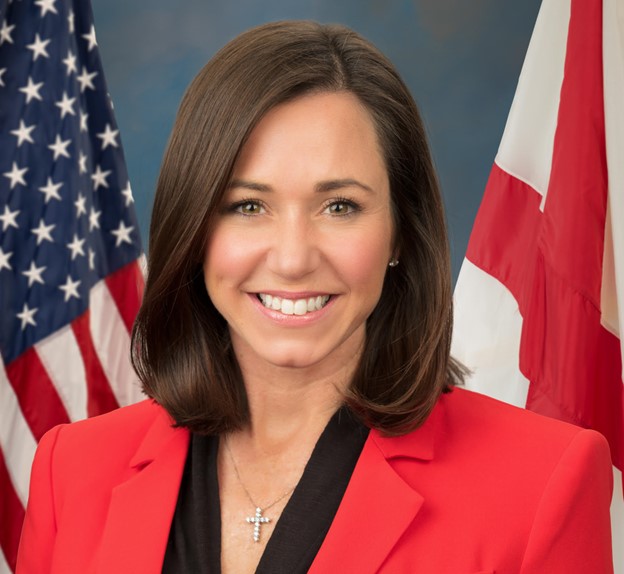
U.S. Senator Katie Britt recently joined her colleagues in advancing the Fiscal Year 2024 Agriculture, Rural Development, Food and Drug Administration, and Related Agencies Appropriations Act, which included targeted funding for agricultural programs important to Alabama. “This critical funding would grow opportunities for families in Alabama’s rural communities so that zip code does not define access to the American Dream,” said Sen. Britt. “Food security is economic security and national security, and I am glad to see important programs prioritized in this bill to safeguard commodities and resources vital to our nation. I will continue to fight to ensure that Alabama’s hardworking farmers, ranchers, and cattlemen can feed and clothe our state, country, and world long into the future.” The bill advanced by the Senate Appropriations Committee consisted of numerous Alabama priorities supported by Senator Britt, including robust funding to combat Chronic Wasting Disease (CWD), continue the National Feral Swine Damage Management program, and look to develop new strategies to address this threat. In February, the Alabama Department of Conservation and Natural Resources confirmed a third case of CWD in Lauderdale County. The disease is a fatal neurological illness affecting cervids that have no known treatment or vaccines currently available. CWD could potentially devastate Alabama’s $1.8 billion hunting industry if allowed to spread. The bill also includes funding for feral swine management. Britt’s office says this is additionally vital to Alabama due to the estimated $50 million in agricultural damage caused in the state each year. The bill provides substantial funding for rural utilities and rural development programs under the U.S. Department of Agriculture, which support infrastructure improvements and economic development in rural communities. The FY2024 Agriculture, Rural Development, Food and Drug Administration, and Related Agencies Appropriations Act now moves to the full Senate for its consideration. Britt is a native of Enterprise. She graduated from the University of Alabama and the University of Alabama School of Law and was elected to the Senate in 2022. To connect with the author of this story or to comment, email brandonmreporter@gmail.com.
Former Alabama lawmaker Fred Plump Jr. pleads guilty in kickbacks case

A former Alabama lawmaker accused of misusing state grant money by paying kickbacks to a legislative assistant pleaded guilty Wednesday. Former Rep. Fred Plump Jr., a Democrat from Fairfield, entered the plea to charges of conspiracy and obstruction of justice in federal court in Birmingham. Plump resigned his seat May 31 as part of his deal with prosecutors. Plump took about $200,000 of the $400,000 that was allocated to his Piper Davis Youth Baseball League by a state legislator and gave it to the legislator’s aide, prosecutors wrote in the plea agreement filed with the court. Plump was allegedly told by the assistant that he had to give the money. “Plump understood that if he did not give half of the money to them, Legislator #1 would not direct Fund money to Piper Davis,” prosecutors wrote. Court documents did not name the legislator, but Rep. John Rogers, a Democrat from Birmingham, has indicated it is him. The payments took place between 2018 and 2022 before Plump took office. He was elected to the state House just last November. Prosecutors said Plump tried to obstruct the investigation by texting the assistant “red alert” to warn her about the investigation. Defense attorney Richard Jaffe said Plump, nicknamed “Coach” for his work in youth sports, has accepted full responsibility and “is committed to redeeming himself.” “We are still baffled by the mistakes and misjudgments that ‘Coach’ made with respect to what led to these charges. How does someone, 76 years old, who has led an exemplary life of service where he and his organization have benefited thousands of disadvantaged youth, end up in this predicament,” Jaffe wrote in an email. Asked if the investigation is ongoing or if other arrests are possible, Jaffe said he was limited in what he could say. “I don’t think we’ve heard the last of this discouraging turn of events, but I am not comfortable giving any opinions about what the future holds,” Jaffe wrote. Plump will be sentenced on October 23. Each charge carries a maximum penalty of 20 years in prison, but court documents show that prosecutors are recommending a more lenient sentence as part of his plea deal. Republished with the permission of The Associated Press.
Florida woman pleads guilty to participating in U.S. Capitol attack

A Florida woman has pleaded guilty to participating in the January 6, 2021, attack on the U.S. Capitol following a rally held by then-President Donald Trump. Corinne Montoni, 33, of Lakeland, pleaded guilty Monday to felony civil disorder in District of Columbia federal court, according to court records. She faces up to five years in prison at a sentencing hearing scheduled for September 28. Montoni was arrested in March 2021. According to court documents, Montoni joined with others objecting to Democratic President Joe Biden’s election victory over the Republican Trump. A mob attacked the Capitol in an attempt to stop Congress from certifying election results, authorities said. Five people died in the violence. Montoni unlawfully entered the Capitol through a broken door next to the Senate wing door on the west side of the building, prosecutors said. She made her way to the Capitol crypt, where she took several videos with her cell phone, including one video posted to her Instagram account in which she states, “We’re in the Capitol cuz this is our house – we paid for this, and they’re trying to steal it from us. Let’s go!” According to court documents, Montoni posted on social media throughout the day about her experiences at the Capitol. On her Parler account, she wrote, “WE BREACHED THE CAPITOL OMG“; On her Facebook account, she wrote, “We are DONE with these traitors. Today, we showed them how done we are. The Capitol building belongs to Us, we the people. This is our house.” More than 1,000 people have been arrested in nearly all 50 states for alleged crimes related to the Capitol breach, officials said. More than 350 people have been charged with assaulting or impeding law enforcement. Republished with the permission of The Associated Press.
10 deaths caused by dangerous rip currents off Florida and Alabama beaches

A firefighter from Georgia and two fathers who drowned while trying to save their children are among at least 10 recent victims of dangerous rip currents along Gulf of Mexico beaches stretching across Florida’s Panhandle to Mobile, Alabama. Many of the deaths happened on days with double red flags — which are posted at beach entrances and on lifeguard stations to warn beachgoers of potential rip currents. Since mid-June, there have been six deaths around Panama City Beach in Florida. Nearby, in Destin, Florida, ex-NFL quarterback Ryan Mallett, 35, drowned Tuesday, but local officials said rip currents weren’t observed — and that day, yellow caution flags, not double red flags, were flying at the beach. Three people drowned off the coast of Alabama between June 20 and June 23, according to the Gulf Shores Police Department. The Gulf of Mexico’s white sandy beaches are a draw for tourists, and as the busy Fourth of July holiday approaches, officials are hoping beachgoers will take extra precaution. “I’m beyond frustrated at the situation that we have with tragic and unnecessary deaths in the Gulf,” Bay County Sheriff Tommy Ford wrote in a Facebook post, accompanied by an aerial view that shows deep trenches that rip currents dug into the shoreline along Panama City Beach. “I have watched while deputies, firefighters, and lifeguards have risked their lives to save strangers. I have seen strangers die trying to save their children and loved ones, including two fathers on Father’s Day.” Ford says his deputies have been cursed at as they’ve tried to warn visitors of the “life-threatening dangers” in the Gulf of Mexico. He said deputies have handed out $500 fines when they’ve seen people in the water during double red flag days. “We don’t have the resources or time to cite every single person that enters the water, but we do our absolute best to use it as a deterrent to entering the water,” Ford said, explaining that an arrest is only authorized upon a second offense, unless the person resists law enforcement. The sheriff notes there is only so much local officials can do, so he’s asking tourists and residents to pay close attention to the flag status at the beach. “Personal responsibility is the only way to ensure that no one else dies,” he wrote. That message is echoed by Greg Dusek, a senior scientist with the National Oceanic and Atmospheric Administration’s ocean service unit. He said that people can’t always see the deep channels on the shoreline caused by rip currents, or even tell how dangerous conditions are by the weather. “Waves can happen when there’s a storm where you are, but they can also happen from storms far away,” Dusek said. “It can be a really nice day at the beach, beautiful, not even much wind. But you have swells coming in from storms hundreds of miles away potentially, and those waves are big enough to drive in rip currents.” Those are the days that officials often see higher numbers of water rescues and drownings. “That’s why I think one of the big messages needs to be: Understand the flag system for the beach you are going to, and follow that guidance,” he said. A rip current is a powerful, narrow channel of water flowing away from the beach and often extending through the breaker zone where waves form. They can emerge on sunny days, and can quickly sweep even the strongest swimmer out to sea. “A rip current, basically, is water likes to go downhill. When breaking waves hit the shore, they get pushed up the beach,” said Daniel Noah, Warning Coordination Meteorologist with the National Weather Service office in Ruskin, Florida. “It’s trying to find the easiest way to get back into the water. And it finds these rip current channels and it can rapidly move back into the Gulf or the ocean.” “The movement of water has a lot of force,” he added. “It’s dangerous for kids, it’s dangerous for adults, it’s dangerous for vehicles.” While the popular Shark Week documentaries and the movie “Jaws” may have etched the fear of sharks into many beachgoers, drownings caused by rip currents claim many more lives. For example, in 2022, there were 108 documented shark bites of all types on humans worldwide, according to the International Shark File at the Florida Museum of Natural History. Of those, Florida accounted for 16 bites, all nonfatal, among the 41 in the U.S. There was one fatality in Hawaii. Meanwhile, through June 24, 2023, NOAA statistics show 55 deaths related to rip currents in the U.S. The seven deaths in Panama City Beach came between June 15 and 24. “Even if there are red flags flying, people look at the water and say, ‘Oh, I’ve been in waves that big before. It doesn’t look that dangerous,’” Dusek said. “Many times, people don’t think about it, and they’re caught off guard by the risk,” he said. “I guess that’s natural human mentality. You get to the beach, you just want to have a good time with your family. You’re not necessarily thinking about what can go wrong.” Republished with the permission of The Associated Press.
Inquiry into teachers unions influence over school COVID closures ramps up
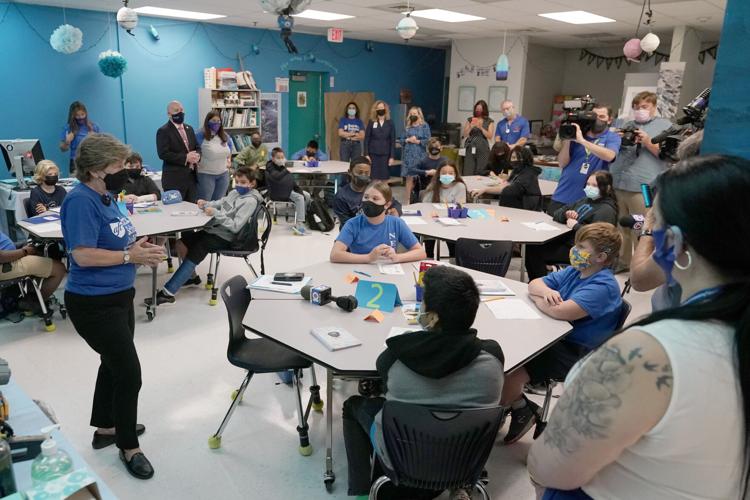
The U.S. House Committee tasked with reviewing the federal pandemic response is ramping up its investigation into what influence teacher’s unions had over federal rules that kept schools closed. Select Subcommittee on the Coronavirus Pandemic Chairman Brad Wenstrup, R-Ohio, sent a letter to U.S. Centers for Disease Control and Prevention Director Rochelle Walensky demanding all records and communications between her and American Federation of Teachers President Randi Weingarten. Critics note that teacher’s unions are significant political donors and raise concerns that those funds could have earned undue access to health policy at the expense of students. As The Center Square previously reported, federal election filings reveal that the American Federation of Teachers and its local affiliates doled out $19,903,532 in political donations in the 2020 election cycle, with almost all of those funds directed to Democrats and liberal groups. AFT donations in 2020 included at least $5,251,400 for the Democrats Senate Majority PAC and $4,600,000 for the Democratic House Majority PAC, according to filings and data compiled by The Center for Responsive Politics’ Open Secrets database. A GOP report released in March last year confirmed these findings and reported that teacher’s unions had “unprecedented access” to the federal officials in charge of recommendations for school reopenings and COVID policy. “Teachers’ unions, including AFT, donated more than $43 million to liberal groups and candidates during the 2020 election cycle,” the GOP report said. “The two largest unions – which both endorsed then-candidate Biden for President – have approximately 4.7 million members. [CDC scientist] Dr. [Henry] Walke’s testimony to the Select Subcommittee shows the Biden Administration rewarded their support with unprecedented access to the policymaking process for guidance on re-opening schools.” Weingarten pushed back on these claims during a Congressional in April with Wenstrup’s subcommittee. AFT argues they were not in favor of keeping schools closed, but for the reopening of schools safely. “If you have educators in your lives, you know that their priority is their students – to create a safe environment for all children and to prepare them for life, career, college, and citizenship,” Weingarten testified at the hearing.. “We know that kids learn best in person, so opening schools safely – even as the pandemic surged – guided the AFT‘s every action.” With conflicting accounts, Wenstrup is now pushing to get those written communications to show what was really said between AFT and federal health officials. Wenstrup pointed out that during that same hearing, lawmakers learned that Weingarten had a “direct telephone line” to Walensky. The latest research shows significant learning loss from students who missed class because of the pandemic. The Department of Education released data last fall showing that national test scores declined the most in decades largely as a result of learning loss from school closures. “Average scores for age 9 students in 2022 declined 5 points in reading and 7 points in mathematics compared to 2020,” the report said. “This is the largest average score decline in reading since 1990, and the first-ever score decline in mathematics. This Highlights report compares performance on the NAEP long-term trend reading and mathematics assessments for age 9 students from the winter of 2020 to results of long-term trend assessments in the winter of 2022.” Wenstrup says the CDC is largely not cooperating with the investigation. “The Department of Health and Human Services is continuing its pattern of obstructing Congress by apparently only producing documents already made publicly available via the FOIA,” the letter said. “As a reminder, FOIA does not apply to Congress. While negotiating your upcoming testimony, the Department, apparently on your behalf, wrote that the negotiation was ‘counterproductive to the [S]elect [S]ubcommittee’s broader dealings with the Department.’ The Department’s obstruction will not be tolerated.” Republished with the permission of The Center Square.


